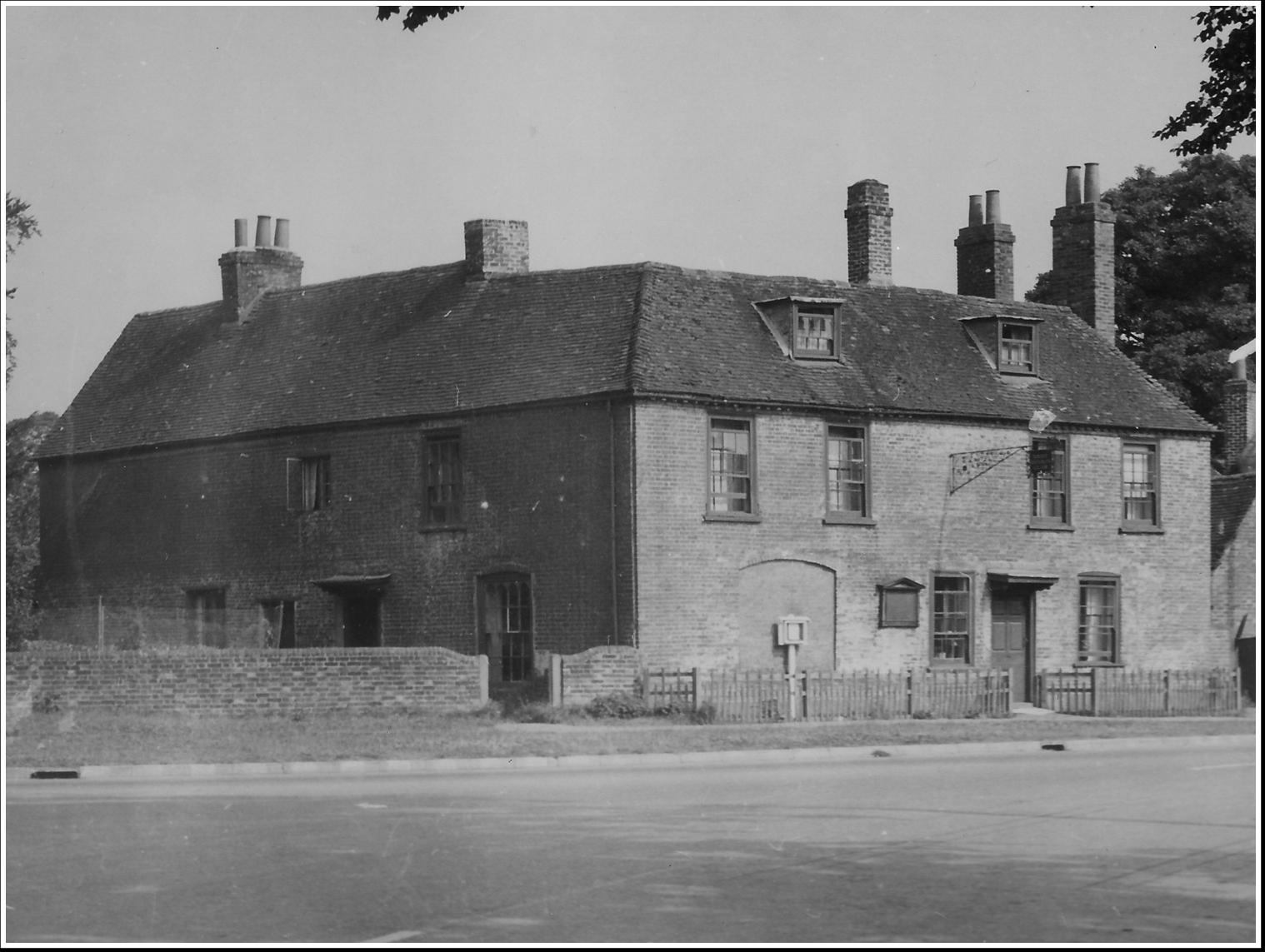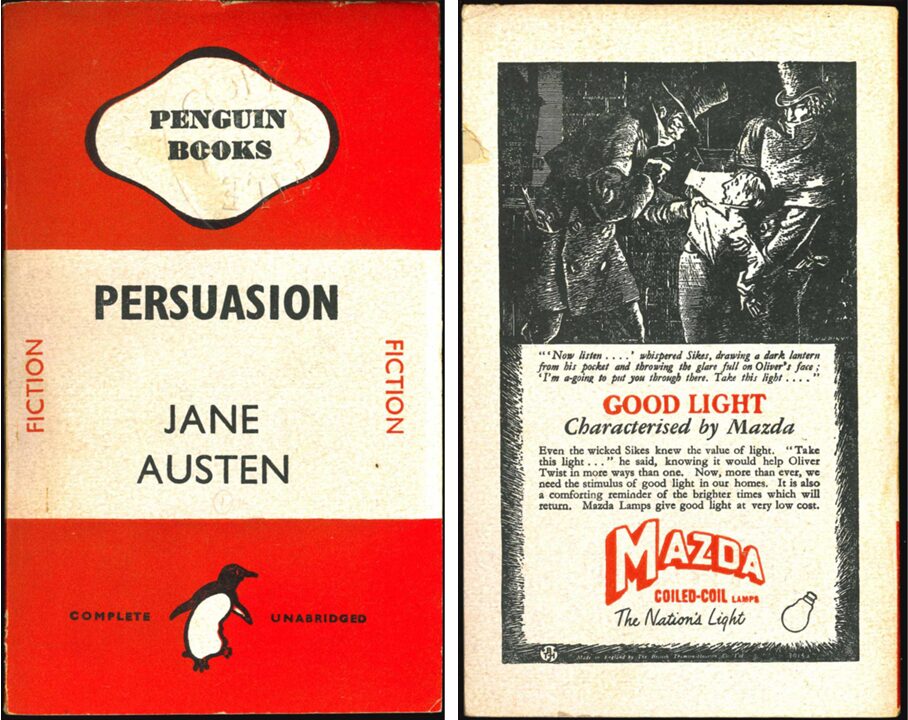Room 1: The Forces Book Club
During WWII, 18th century literature was popular among soldiers. Many historians have put this down to escapism and respite from the horror and noise of the twentieth century. Jane Austen was a popular author among soldiers from many countries during this war.
In Britain, lightweight paperbacks were designed by Penguin, who were contracted by the war office in July 1942 to create books to fit in soldiers’ pockets. In an advertisement for this club, Penguin assured the country that ‘the services can be sure of a ration of good reading’. Every month, ten books were selected and reprinted for The Forces Book Club. Overall, 120 titles were chosen, including Northanger Abbey in April 1943 and Persuasion in September 1943.
An advert for Mazda Coiled-Coil lamps on the back of the 1943 edition of Persuasion cheered its readers with ‘a comforting reminder of the brighter times which will return.’
Studies on literature and the First World War often cite Jane Austen as being ‘prescribed’ to soldiers suffering from shell shock, whilst an article in The Times in 1915 entitled ‘What to Read to the Wounded’ detailed the recollections of a hospital worker and the trial-and-error process of finding appropriate reading which would calm the nerves of ‘these strong men’:
‘we tried Austen next, and the wise lady whose cares, more than a century ago, were like ours, but who in printed page showed such a fine detachment from them… we quote an observed instance – the very thing… It happened that a tired soldier found her just what he wanted’…’we found ourselves for the first time wishing that the dear lady had written at greater length ”Has she written no more?” he asked, as the last page of “sense and sensibility” came.’
However, it was not only a chance for escapism which had soldier’s turning to Austen, but also an interest in the author as an individual. Secondary literature on Jane Austen was being published in the 1940s. Notably, Sheila Kaye-Smith and G. B. Stern’s Talking of Jane Austen, first published in 1943, was reprinted in 1944 as a service edition, and W.H. Smith included the book in its list of ‘The Best Books of the War’ created in 1947 – showing that even though her works were considered calming for shell shock victims, a desire for knowledge about the author herself also existed among men at war.

